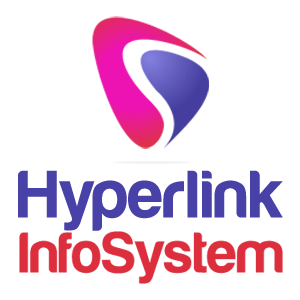We are living in an age where connectivity can be seen everywhere. This is where IoT becomes a beacon of hope by seamlessly integrating the physical and digital worlds.
But, when we discuss about connectivity, there is always an eminent need for security.
Here, the role of Azure IoT Hub starts. It acts as a guardian angel by providing strong infrastructure services that are vital for [protecting IoT systems.
Irrespective of whether you are looking to opt for
Azure Migration or seeking Azure Consulting expertise, it is imperative to comprehend the way Azure’s solutions can strengthen your IoT endeavors.
In this blog, we will look into the best practices and implementation strategies.
We will also learn the way Azure Infrastructure Service can be utilized in securing your IoT system.
Comprehending the Azure IoT Landscape
When we talk about the advancement of technology, it is challenging to forget about IoT. And when you merge it with Azure, it can result in a powerpack performance in this particular environment.
Today, we are seeing businesses looking to make the most out of IoT infrastructure. This is where Azure presents two separate paths:
1. Azure IoT Central
2. A collection of personalized PaaS offerings
Let us first discuss Azure IoT Central.
It is a managed application platform that perplexes IoT solutions with the help of its application templates. This results in swift development and preparation.
It is a must-opt tool for businesses that are searching for a dependable, innovative solution. It is being used in various domains like retail, energy, and healthcare with a turnkey method.
As a business, if you are looking for particular requirements that demand a customized setup, Azure’s PaaS services, like the crucial Azure IoT Hub, come into the picture.
This system comes in handy when developing custom solutions that can be merged with existing systems. This provides granular control over the IoT operations.
Opting between these two solutions is more than a technical choice. It is also about making a strategic business decision that weighs the merits of simpleness against the requirement for personalization.
When businesses explore further into Azure’s IoT landscape, they find a strategic platform that is balanced to address the comprehensive IoT requirements.
This encompasses from connecting and managing devices to integrating advanced analytics and ML.
Hence, it is safe to say that Azure’s IoT suite helps in securing and streamlining IoT structures.
For more comprehensive details on the way Azure’s IoT services can be exploited to strengthen your IoT requirements, consider visiting this thoughtful RiskInsight article, which acts as a guide to help you start your digital transformation trip.
Azure IoT Hub and Its Role in Securing IoT Devices
Azure IoT Hubs act as a pillar in the Azure IoT system. It performs activities that help devices communicate, receive instructions, and transmit data. It is also the central base for IoT device management security that integrates seamlessly with Azure’s suite of tools.
This includes Azure Machine Learning and Azure SQL Database that help in curating a united IoT solution.
If you consider it as a hub, you are wrong. It acts as a gateway that allows secure, two-way communication between IoT applications and the devices they depend upon.
With the help of this service, it becomes possible to get secure device connections. It even assists in facilitating the monitoring and management of device fleets.
Azure IoT Hub allows secure and reliable communication channels between millions of IoT devices and the cloud.
This particular facet ensures that data integrity and privacy are maintained. This way, it sets a very high standard for security in the IoT space.
If you wish to get a comprehensive understanding of Azure IoT Hub’s features and capabilities, we recommend you visit Shisho Dojo’s detailed guide.
Azure Consulting for IoT Security
Azure Consulting acts as a middleman between technology and strategy. It provides priceless insights into the complex world of IoT security.
Businesses looking to make the most out of Azure’s capabilities should avail Azure Consulting Services.
It makes sure that your business’s IoT infrastructure is strong and secure. Azure consultants are well aware of maximizing Azure’s wide array of services.
They can help your business through the intricacies of Azure Migration and integration.
And, if you think that their support is limited to technical setup, you are in for a shock! They can foresee security challenges and prepare for defenses proactively.
When businesses use Azure Infrastructure Services through the eyes of experienced consultants, it can have a positive effect on their IoT security position.
Hence, this collaboration with
Azure Consulting results in a secure, efficient, and future-proof IoT system.
The Pillars of IoT Security
Keeping your IoT infrastructure safe is just like developing a defensive mechanism. This is where you need a well-rounded approach that includes connection security, device security, and cloud security.
Let us explain each of these in brief.
Device Security
Device security is the basic line of defense. This is where you need to select hardware that is customized as per the specific business requirements without any extravagant features. This decreases weaknesses.
To protect your data against physical and digital falling out, you need to include secure elements like Trusted Platform Modules for encrypted storage and using tamper-proof hardware.
On top of this, there is a stringent software development process that includes security in every line of code.
Connection Security
Connection security acts as a channel around the fortress. It utilizes protocols such as TLS 1.2 to curate a safe tunnel through which data travels. This protects it from eavesdropping or meddling.
This is the scenario where authentication mechanisms like X.509 certificates are vital to validate device recognition before giving access to network resources.
Cloud Security
Cloud security protects your data against any threats when it is in the cloud. The good news is that it scans the complete system for threats and vulnerabilities. It does that with the help of tools like Microsoft Defender for IoT.
Implementing Azure IoT Hub Best Practices
Here are some of the best practices for implementing Azure IoT Hub.
Uniform Firmware Updates
It is important to protect your IoT devices against vulnerabilities. Businesses do this by executing uniform firmware updates. This way, businesses ensure that their IoT devices function with the latest security patches.
Rigorous Access Management
Businesses must have stringent access control. This way, they can manage who can interact with your IoT devices and data.
The important thing is to use the principle of least privilege. Grant users the minimum level of access that is requisite to perform their duties.
Threat Monitoring
Businesses must use tools like Microsoft Defender for IoT to scrutinize potential threats within devices and cloud services continuously. This will allow for real-time detection and response to security threats.
Secure Device Provisioning
Businesses should set up safe and trustworthy provisioning procedures for new devices. They can even use services like Azure IoT Device Provisioning Service to mechanize and secure device registration.
Data Protection
Businesses should encrypt critical data at rest and in transit. This will make sure that the confidential data remains safe from potential intruders.
When you execute these best practices with Azure IoT Hub, it helps in protecting your IoT infrastructure. If you wish to read more on these best practices, visit the
Microsoft Learn page.
Azure Infrastructure Services for IoT Security
Azure Infrastructure Services comprises an all-inclusive security framework that is important for the modern IoT world.
Some of these services include Azure Active Directory and Azure Sentinel. Thus, it provides a defense mechanism that is very strong for IoT infrastructures.
Identity and Access Management
With the help of Azure Active Directory, businesses can not only authenticate but also authorize users access to your IoT resources.
When you execute role-based access control with Azure Active Directory, it can fine-tune access policies and give precise control over who can manage and utilize your IoT solutions.
Network Security
Azure Network Security groups and Azure Firewall protect your IoT infrastructure from uninvited network access.
Thanks to these network security tools of Azure, businesses get the opportunity to define and execute security rules at the network layer.
This results in them preventing malicious traffic from compromising your IoT devices and data.
Threat Detection and Response
Thanks to Azure Sentinel, you get extensive security analytics and threat intelligence throughout the business.
It even provides you with real-time analysis of data. This helps in ascertaining and responding to security threats quickly.
Data Encryption and Protection
Azure Key Vault assists in the management of cryptographic keys. When you use it with IoT devices, it stores sensitive data like device keys and credentials safely.
Azure Infrastructure Services helps businesses strengthen their security position. It does that by addressing all aspects of IoT security.
Here, the role of each service is quite crucial in securing a compliant IoT system.
It also assists in overcoming the evolving threats of the digital world. Azure Infrastructure Services is the main actor here that provides security to the IoT environment.
It utilizes different types of tools like Azure Active Directory for strong identity management and Azure Network Security for impassable network defenses.
Azure Sentinel provides advanced threat detection in conjunction with real-time security analytics. Azure key Vault plays a crucial part in the management of cryptographic keys.
It protects sensitive data across devices and services. Once businesses use these services, it helps them develop a secure IoT system.
To get more information on Azure Infrastructure Services and its effect on IoT security, we suggest you read the Microsoft Learn page.
Azure Migration and IoT Security
Azure Migration is a vital cog in the seamless transition for IoT infrastructures. Businesses should look at it with a security-first mentality.
The very first thing that you need to do is commence with meticulous planning and implementation.
Businesses should do this while opting for the right Azure IoT services to transfer device data.
Use Azure Private Link, as it allows devices to sync in with Azure services through a private endpoint on your VNet.
This will allow businesses to restrict the risk of exposing IoT communications to the public internet. It will also strengthen data security by protecting unauthorized access.
Once the businesses start utilizing Azure Infrastructure Services, it helps them ensure that their migration is seamless. It also establishes a strong security framework.
Authentication and Identity Management
When we are discussing IoT security, the things that come to mind are strong authentication and identity management.
Here, Azure IoT Hub goes one step ahead by strengthening security with two lethal authentical methods.
1. Shared Access Signature (SAS) tokens
2. X.509 certificates
Businesses can compare Shared Access Signature tokens with limited time passes. It provides a temporary duration for other devices to access the IoT hub.
At the same time, X-509 certificates can be used as a long-haul authentication solution. It allows the development of certificate chains, thereby enhancing trust across the network.
Once businesses start using these authentication protocols effectively, it aids them in getting a secure IoT environment. Under this environment, every device’s identity is verified.
The communication that takes place is secure. This assists in preparing a foundation that protects against cybercriminals.
Concluding Thoughts
From the blog, you might have received a fair idea about the complexities of IoT security.
We have also tried our best to provide information on the key role played by Azure Consulting, Azure Migration, and Azure Infrastructure Services.
When you use these Azure services in unison, it results in a safe, dynamic, and unified digital system.
Once businesses start using the all-inclusive services of Azure, it helps them to tackle any security threat in a very confident manner.
Irrespective of whether you are just starting with Azure Migration or trying to make the most of the existing setup with Azure Infrastructure services, keep this in mind: Azure Consulting is always there to support you towards a spirited and safe IoT world.

